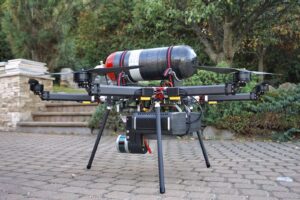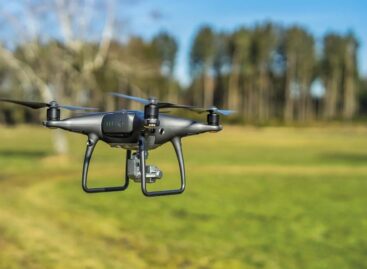Hydrogen propulsion in aviation – Hungarian researchers are writing the future of aviation
The future of more economical and environmentally sustainable aviation is hydrogen propulsion. Aircraft manufacturers have already achieved promising results, but more research and development is needed for its widespread use. Experts from the HUN-REN SZTAKI Systems and Control Theory Research Laboratory (HUN-REN SZTAKI SCL) are working on the technology together with the most important players in the industry.
 Current fuels used for aviation – primarily kerosene – release large amounts of greenhouse gases into the atmosphere, so it is essential to find more sustainable alternatives. Hydrogen is one of the most promising ways to decarbonize aviation and reduce its emissions – hydrogen can be extracted from water and does not release carbon dioxide when burned.
Current fuels used for aviation – primarily kerosene – release large amounts of greenhouse gases into the atmosphere, so it is essential to find more sustainable alternatives. Hydrogen is one of the most promising ways to decarbonize aviation and reduce its emissions – hydrogen can be extracted from water and does not release carbon dioxide when burned.
The European Union is encouraging – and supporting it with its tax policy, for example – that airlines move towards hydrogen propulsion. However, the solution can only work if other major economic regions of the world, especially Asia and the United States, also take steps in this direction.
Technological challenges and achievements
Due to the low energy density of hydrogen, larger fuel tanks are needed to cover the same distance, and the current fuel tanks used in aircraft are not suitable for storing hydrogen anyway. Major aircraft manufacturers are already actively working on the solution: an Airbus A380 has already been equipped with a hydrogen-powered engine and storage system for experimental purposes. The aim is to gain as much experience as possible in charging, storage and testing the aging of the tanks.
The use of hydrogen is justified – at least for now – especially for long- and medium-haul flights, while for short distances the future is for fully electric propulsion. At the prototype level, 10-20-seater hydrogen-powered aircraft already exist, as well as, for example, fully electric aircraft in Norway, where they transport passengers over short distances between two fjords, and the Hungarian Magnus Aircraft has manufactured smaller electric aircraft for pilot training.
The development of airport infrastructure and a supply chain related to hydrogen is also a task to be solved. Airbus recently changed the target date for the series production of hydrogen-powered passenger aircraft to 2050 – not for technical reasons, but because airports and airlines are still unable to keep up with the manufacturers’ developments.
Hydrogen-based propulsion – from drones to passenger flights
Hydrogen can be burned directly, but it can also be converted into electricity using fuel cells. Drones operate with hybrid propulsion: the fuel cell is not capable of delivering high power quickly, suddenly – which is needed for take-off, for example – so it must be combined with a battery. The goal: to find the ideal combination between the battery, the electric drive and the fuel cell. If the flight path is known in advance, the system can reserve energy for takeoff or landing, which can improve efficiency.
HUN-REN SZTAKI SCL deals with hydrogen-powered drones and smaller vehicles – the research lab flew the first hydrogen-powered drone in Hungary. “Our experts are working from the drone level to ensure that the technology can be extended to larger vehicles and large engines – said Bálint Vanek, deputy head of HUN-REN SZTAKI SCL. – In such cases, drones and smaller vehicles actually act as flying laboratories, on which the behavior of large machines can be modeled.”
On a 1:10 scale model – i.e. a 3-meter model in the case of a 30-meter large machine – it is possible to examine the phases of take-off, flight and landing, as well as their energy requirements. Based on this, it is possible to optimize what energy – electricity or hydrogen – to use.
To develop the solution, close cooperation is required with the fuel cell manufacturer. Within the framework of the Hungarian defense project supported by the Thematic Area of Excellence Program, which finances research, development and innovation activities, HUN-REN SZTAKI SCL is working together with the English manufacturer of the cells: one of their main tasks is the mathematical modeling of the fuel cell and its refinement.
Related news
New effective help arrives for the protection against grapevine cicada, drone detection and spraying has begun
🎧 Hallgasd a cikket: Lejátszás Szünet Folytatás Leállítás Nyelv: Auto…
Read more >Drone detection of grapes infected with golden yellows begins
🎧 Hallgasd a cikket: Lejátszás Szünet Folytatás Leállítás Nyelv: Auto…
Read more >Golden Ear Farmer training is transforming
🎧 Hallgasd a cikket: Lejátszás Szünet Folytatás Leállítás Nyelv: Auto…
Read more >Related news
How do young adults celebrate?
🎧 Hallgasd a cikket: Lejátszás Szünet Folytatás Leállítás Nyelv: Auto…
Read more >Vajda-Papír celebrates Ooops!’s 15th anniversary with a hybrid AI campaign
🎧 Hallgasd a cikket: Lejátszás Szünet Folytatás Leállítás Nyelv: Auto…
Read more >Pre-holiday shopping at up to half price
🎧 Hallgasd a cikket: Lejátszás Szünet Folytatás Leállítás Nyelv: Auto…
Read more >






